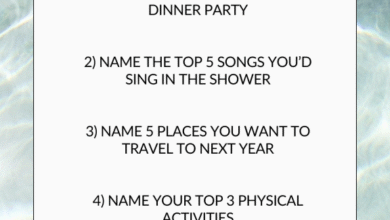A Story Born from Conflict: The Premise of the Novel
At the heart of The War That Saved My Life is Ada, a ten-year-old girl living in London on the eve of World War II. She’s not just poor and uneducated—she’s also trapped, both physically and emotionally, by her abusive mother. Born with a clubfoot, Ada is confined to a tiny apartment and told she’s too hideous to be seen by others. She has never been to school, never played outside, and certainly never felt loved.
The story begins when Ada decides to escape with her younger brother Jamie as children are being evacuated from London due to the threat of bombings. They’re placed in the care of Susan Smith, a reluctant guardian in the countryside who is grieving her own personal loss. Initially cold and distant, Susan eventually becomes the first person to treat Ada with dignity and compassion.
That setup might sound simple, but it lays the groundwork for an incredibly layered narrative. Ada’s journey away from war-torn London is less about escaping bombs and more about breaking free from the war inside her home—the emotional abuse, self-hatred, and isolation inflicted by her mother. The title is more than just clever; it’s a literal statement. The war, in all its horror, ironically becomes Ada’s s.
Ada’s Emotional Transformation: From Fear to Freedom
One of the most compelling aspects of The War That Saved My Life is watching Ada’s emotional arc unfold. When we first meet her, Ada is deeply traumatized. Her mother has told her for years that she’s worthless and incapable. She’s never received medical care for her clubfoot and believes she’s broken, both physically and mentally.
Yet, when the chance comes to flee during the mass evacuation, Ada doesn’t hesitate. It’s her first act of rebellion, her first step toward independence A Story Born from Conflicthttps://www.studiobinder.com/blog/what-is-conflict-in-a-story/. That moment alone shows a spark of resilience that becomes central to her character.
Life in the countryside isn’t immediately easy. Susan is grieving the loss of her partner and doesn’t exactly welcome Ada and Jamie with open arms. Ada, in turn, is distrustful and socially awkward, unsure how to respond to kindness or even simple meals. The novel doesn’t rush this transformation. Instead, it slowly reveals how, with time and care, Ada begins to unlearn the lies she’s internalized.
She discovers freedom in small ways—riding a horse, learning to read, and walking around town without shame. These seemingly minor experiences are monumental for someone who has lived her whole life locked inside both a room and her own mind. Watching Ada discover her worth and capabilities is nothing short of inspiring.
Susan Smith: The Unlikely Heroine
Susan Smith isn’t your typical maternal figure. When Ada and Jamie are assigned to her, she’s resistant and overwhelmed. She insists she’s “not nice,” and she’s dealing with grief that’s never named explicitly (though older readers will infer that she lost a same-sex partner during a time when such relationships were taboo).
But Susan’s journey mirrors Ada’s in many ways A Story Born from Conflict. Just as Ada learns how to trust and open up, Susan begins to heal through her relationship with the children. She provides structure, nourishment, and education—basic things that Ada has never received before—but more importantly, she gives her validation. Susan never treats Ada as disabled or broken. She sees her as capable, intelligent, and worthy of love.
What’s refreshing about Susan’s character is that she isn’t portrayed as a saint or a savior. She’s flawed, sometimes impatient, and not always emotionally available. But she shows up, again and again, which is exactly what Ada needs. The novel does an excellent job of showing how healing can happen not through grand gestures but through consistency, patience, and quiet acts of care.
A Rich Historical Backdrop: WWII Through a Child’s Eyes
While the heart of the story is Ada’s personal journey, The War That Saved My Life is also grounded in its historical setting. The war looms constantly in the background, serving as both a literal and metaphorical force of change.
The evacuation of children from London was a real event, known as Operation Pied Piper, which saw over three million children relocated to the countryside. This aspect of the novel is handled with historical accuracy but also through a deeply personal lens. Readers see the war not through battle scenes or politics but through the disruption of daily life, the rationing of food, the fear of air raids, and the emotional toll of separation.
Ada’s exposure to the war adds layers to her growth A Story Born from Conflict. She starts helping with wartime duties like watching for German spies or assisting with medical care. These tasks give her a sense of purpose and belonging. For the first time, she feels like she matters, not just to Susan but to her community.
Even with its young audience in mind, the book doesn’t shy away from depicting the darker aspects of war—loss, trauma, and the cruelty of displacement. Yet it never becomes too heavy, striking a careful balance that makes it both age-appropriate and emotionally resonant.
Trauma and Resilience: Core Themes That Transcend Genre
What sets The War That Saved My Life apart from other historical novels is its exploration of trauma and healing. Ada’s story is a powerful reminder of how abuse shapes a person’s worldview—and how love and stability can help undo that damage.
Bradley doesn’t sugarcoat Ada’s internal struggles. Even after escaping her mother’s clutches, Ada continues to battle feelings of worthlessness, fear, and confusion. Her healing is not linear, and she often resists help or lashes out when overwhelmed A Story Born from Conflict. This makes her character incredibly realistic and relatable, especially to readers who may have experienced their own emotional hardships.
The theme of resilience runs strong throughout the novel. Ada is not a traditional hero—she’s stubborn, guarded, and often difficult—but her strength lies in her ability to keep going, to adapt, to survive. Her victories may seem small—learning to read, trusting Susan, standing up to her mother—but they’re deeply meaningful.
These emotional truths make the novel accessible to adults as well as younger readers. Anyone who has experienced adversity, low self-esteem, or the feeling of being unwanted will find something to relate to in Ada’s journey.
Critical Acclaim and Lasting Impact
The War That Saved My Life received widespread critical acclaim upon its release in 2015. It was a Newbery Honor Book, a Schneider Family Book Award winner, and a #1 New York Times bestseller. More than just awards, though, the book struck a chord with educators, parents, and therapists alike for its honest depiction of emotional abuse and recovery.
Many teachers use it in classrooms to teach empathy and resilience. Parents have praised it for sparking meaningful conversations with their kids A Story Born from Conflict. And young readers have connected with Ada on a deeply personal level—writing letters to the author, sharing their own stories, and finding hope in Ada’s transformation.
The novel’s success led to a sequel, The War I Finally Won, which continues Ada’s story during the later years of the war. Together, the books form a powerful duology that shows how healing is a journey, not a destination.
Final Thoughts: Why ‘The War That Saved My Life’ Still Matters
The War That Saved My Life is more than a children’s book. It’s a deeply moving, beautifully written story that explores the human condition in all its complexity. It reminds us that war, for all its devastation, can sometimes bring unexpected blessings A Story Born from Conflict. For Ada, the war didn’t just save her life—it gave her one worth living.
The novel is a masterclass in storytelling: richly drawn characters, a compelling historical setting, and themes that resonate across generations. Whether you’re a teacher looking for a meaningful classroom read, a parent seeking a story to share, or just a book lover in search of something heartfelt, The War That Saved My Life is a must-read.



